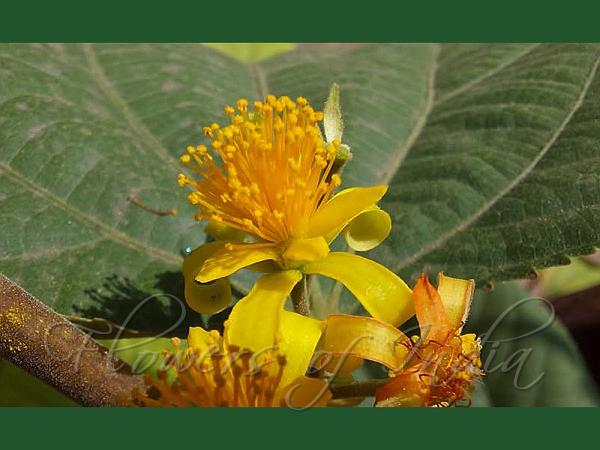|
| Falsa |
|

|

|
|
|
Photo: |
Botanical name: Grewia asiatica Family: Tiliaceae (Falsa family)
Synonyms: Grewia subinaequalis, Grewia hainesiana
Synonyms: Grewia subinaequalis, Grewia hainesiana
Falsa is a shrub or small tree which can grow upto 12 feet high. Its bark
is greyish-white or greyish-brown. Leaves with serrated margins vary from
broadly heart-shaped to obliquely ovate. The flowers are yellow about 2
centimeters in
length, and borne in densely crowded (rarely solitary) axillary cymes. The
fruit is edible, rounded, small dark blue to almost black when ripe,
sweetish and somewhat acid, with a fairly good flavor and each drupe contains
a rather large seed. The fruit is eaten raw with relish and sold in Delhi
lanes in summers, with great enthusiasm by singing hawkers. Falsa is
found in Iran, Afghnistan to the Indian Subcontinent to SE Asia and
Australia.
Medicinal uses: The fruit is supposed to possess astringent,
cooling and stomachic properties. A spirit is distilled and a pleasant sherbet
is made from it. The leaves are used as an application to pustular eruptions.
The Santals prescribe the root-bark for rheumatism. In Sind an
infusion of the bark is used as a demulcent.
The fruit is supposed to possess astringent,
cooling and stomachic properties. A spirit is distilled and a pleasant sherbet
is made from it. The leaves are used as an application to pustular eruptions.
The Santals prescribe the root-bark for rheumatism. In Sind an
infusion of the bark is used as a demulcent.
Medicinal uses:
 The fruit is supposed to possess astringent,
cooling and stomachic properties. A spirit is distilled and a pleasant sherbet
is made from it. The leaves are used as an application to pustular eruptions.
The Santals prescribe the root-bark for rheumatism. In Sind an
infusion of the bark is used as a demulcent.
The fruit is supposed to possess astringent,
cooling and stomachic properties. A spirit is distilled and a pleasant sherbet
is made from it. The leaves are used as an application to pustular eruptions.
The Santals prescribe the root-bark for rheumatism. In Sind an
infusion of the bark is used as a demulcent. | Identification credit: Milind Girdhari | Photographed in Maharashtra & Delhi. |
• Is this flower misidentified? If yes,